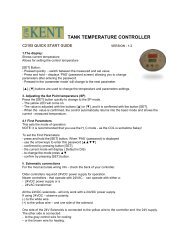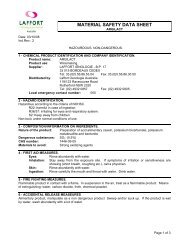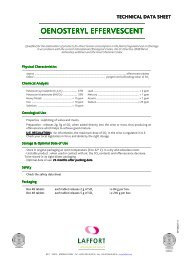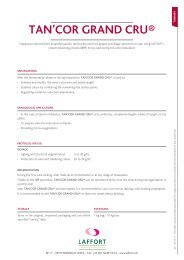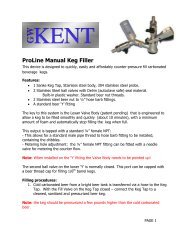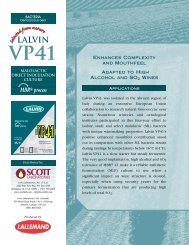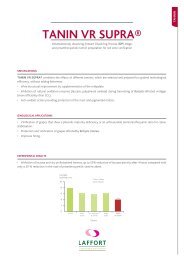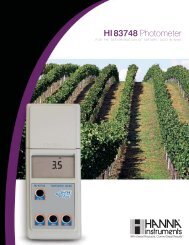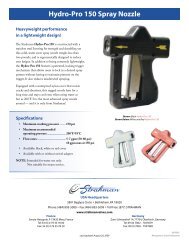THE DIVERSE FUNCTIONS OF OXYGEN, Dominique Delteil ...
THE DIVERSE FUNCTIONS OF OXYGEN, Dominique Delteil ...
THE DIVERSE FUNCTIONS OF OXYGEN, Dominique Delteil ...
You also want an ePaper? Increase the reach of your titles
YUMPU automatically turns print PDFs into web optimized ePapers that Google loves.
DELTEIL, <strong>THE</strong> <strong>DIVERSE</strong> <strong>FUNCTIONS</strong> <strong>OF</strong> <strong>OXYGEN</strong>. 2 ND PART, 2<br />
The addition of ascorbic acid can complete the efficiency of SO 2 for certain wines. When all the<br />
other parameters have been adequately considered, a 5 g/hl addition will perfectly serve its<br />
purpose.<br />
• The homogenous sulphite addition is a key parameter of winemaking.<br />
• It is crucial to achieve the desired SO 2 concentration in the entire tank, particularly in the<br />
yeast sediment at the tank bottom.<br />
• Afterwards, white wines have to be racked off within 24 h following sulphite addition,<br />
while completely avoiding contact with air.<br />
Before the wine is pumped, the pipes and the bottom (up to 1 meter height) of the receiving tank<br />
should be saturated with CO 2 , the pump valves should be in good condition and the pipefittings<br />
undamaged. The wine should remain under the CO 2 blanket during the pumping.<br />
Numerous studies have shown that sulphite addition to wines in the fermentation tank led to the<br />
production of unpleasant sulphur odours (rotten egg, onion, garlic, etc.).<br />
This is the case when the wine is left unstirred on the yeast lees for several days.<br />
For Mediterranean white and rosé wines, sulphite addition to the fermentation tank upon sugar<br />
depletion, and 24 hours before racking allows to:<br />
• implement an efficient internal protection during a stage which is very prone to<br />
involuntary Venturi effects: the racking<br />
• avoid the production of unpleasant sulphur odours by stirring the yeast twice: once<br />
during sulphite addition, and the second time during racking (for those, which have not<br />
sedimented).<br />
For rosé wines, the reasons for oxidations during slow final stages of fermentations or during<br />
rackings are the same. However, the consequences are different: a loss of the vivid rose hues<br />
results, with appearance of more yellowish tones. The preventive measures are the same as for<br />
white wines.<br />
Regular addition of oxygen to red wines during ageing:<br />
• Before and after malolactic fermentation<br />
As soon as the wine has been devatted, 5 factors have to be considered together for the further<br />
procedure since they strongly interfere with each other. It is not possible to consider only one of<br />
these factors without taking into account the others.<br />
1. The wine polyphenol and polysaccharide composition, and the nature of the cap<br />
management<br />
2. The wine yeast lees: their quantity but also their composition<br />
3. Wine and yeast lees stirrings<br />
4. The oak, when barrel ageing is carried out, and obviously<br />
5. The oxygen<br />
How can all these factors be managed and a practical line of action be defined for any wine<br />
type<br />
Certain procedures have organizational priority, notably the rackings.<br />
Racking leads to oxygen additions and stirring of yeast.<br />
When the racking program is planned, its impacts on other factors are assessed: oxygen and<br />
yeast stirring. Afterwards, a further addition can be envisaged, if the oxygen contribution<br />
through racking was not sufficient, or if the yeast were not sufficiently stirred.<br />
VINIDEA.NET, WINE INTERNET TECHNICAL JOURNAL, 2004, N°4



